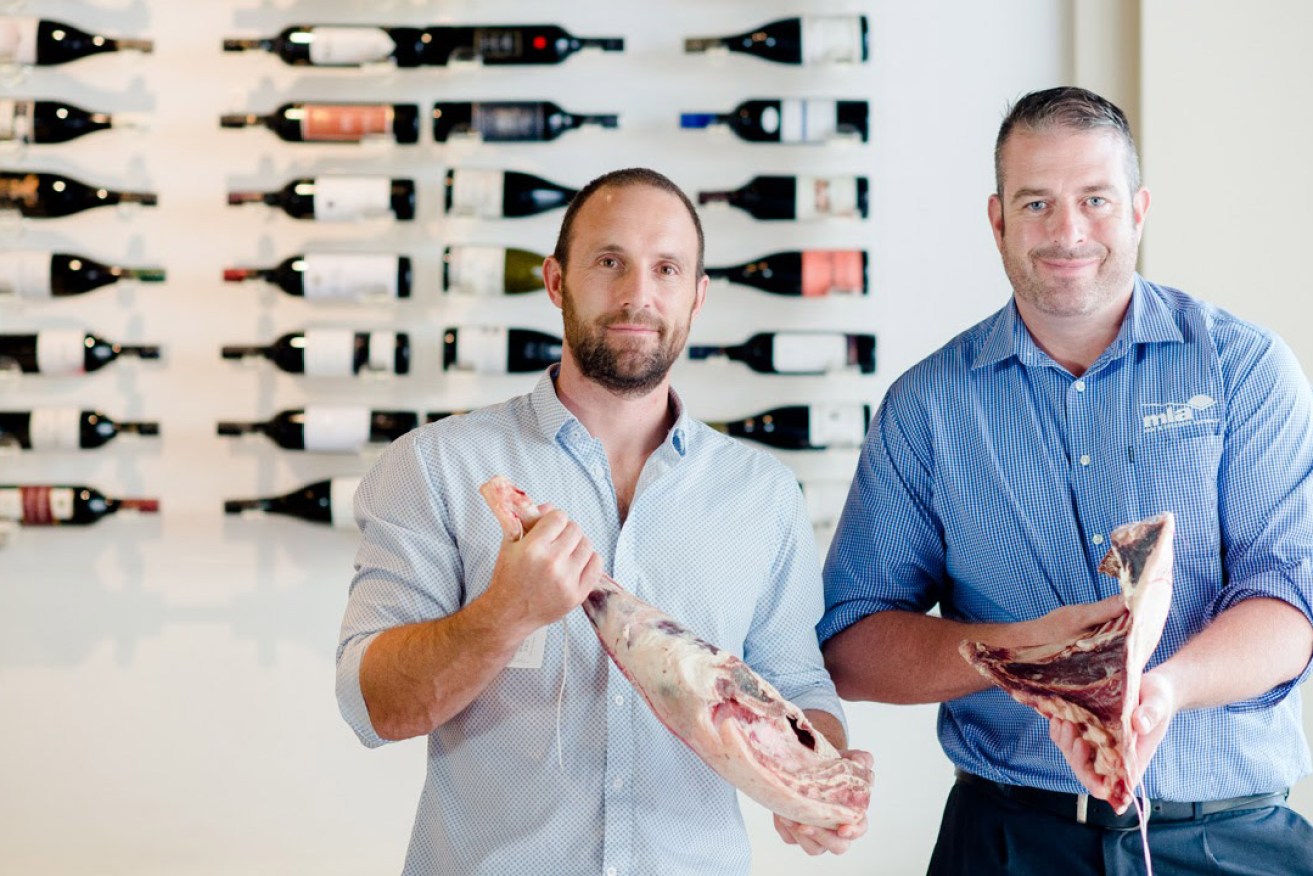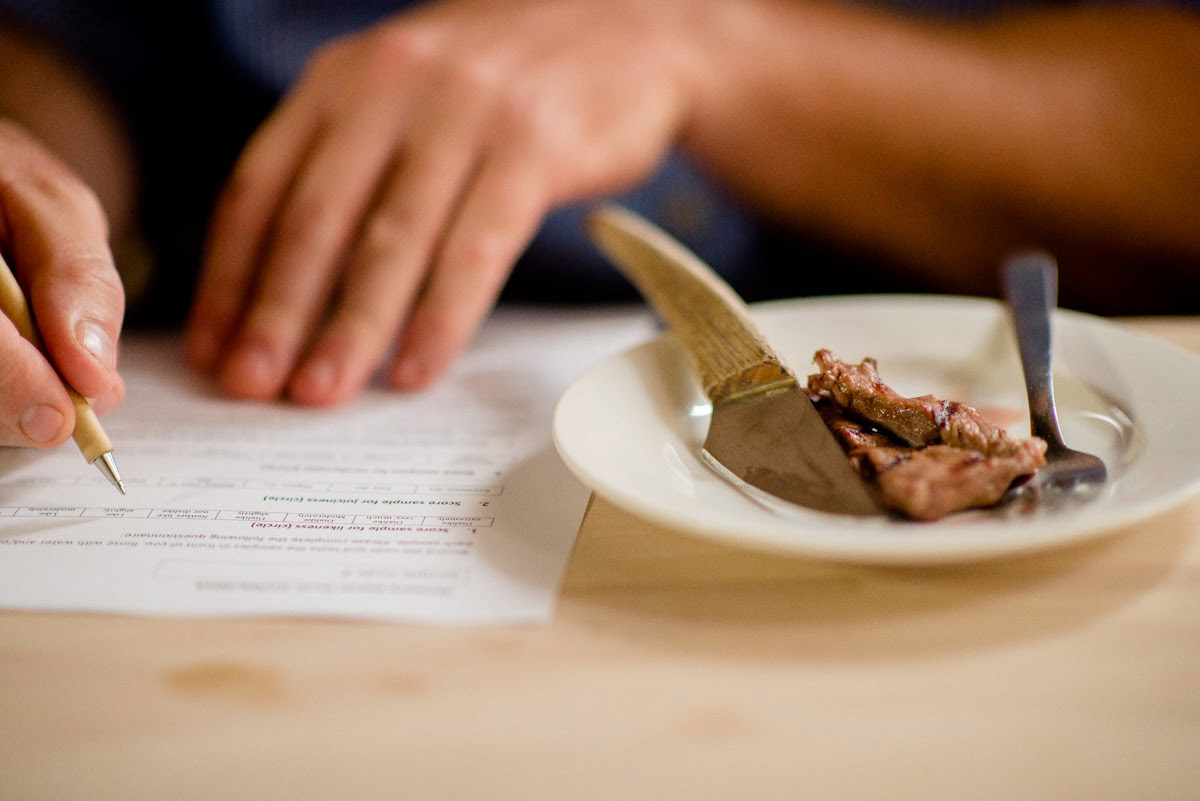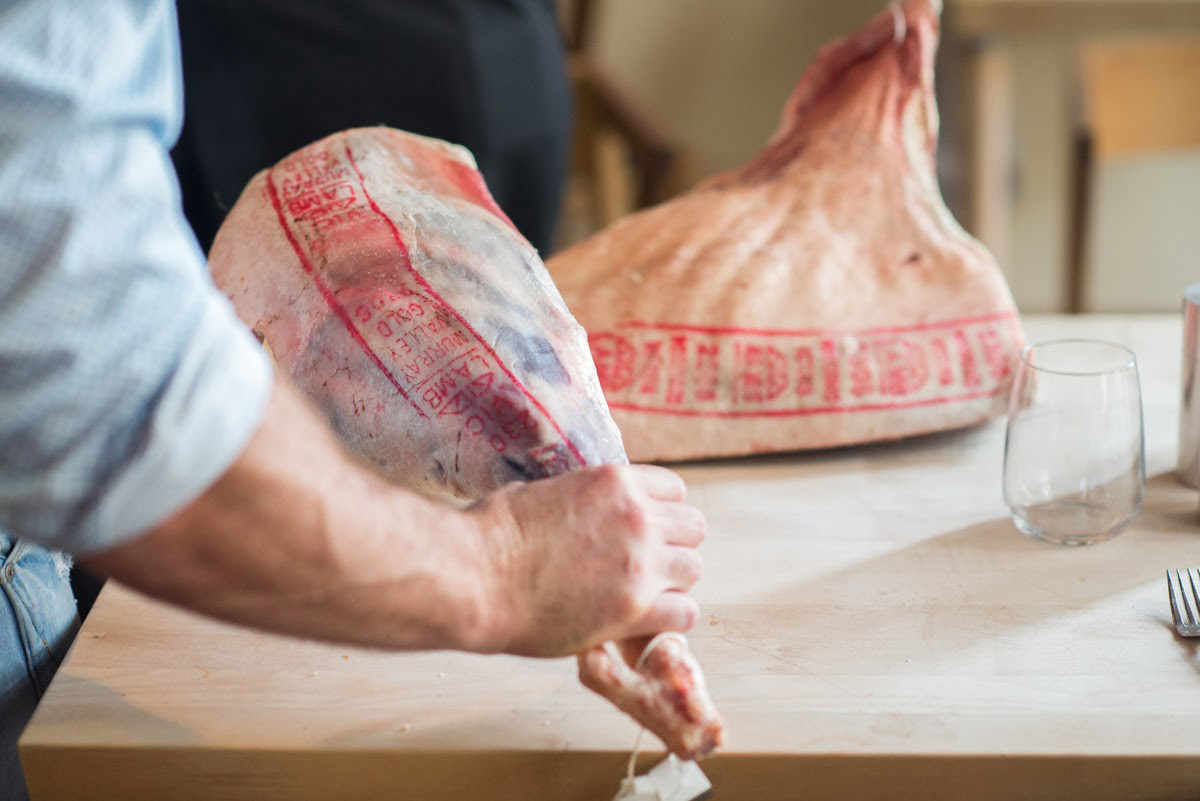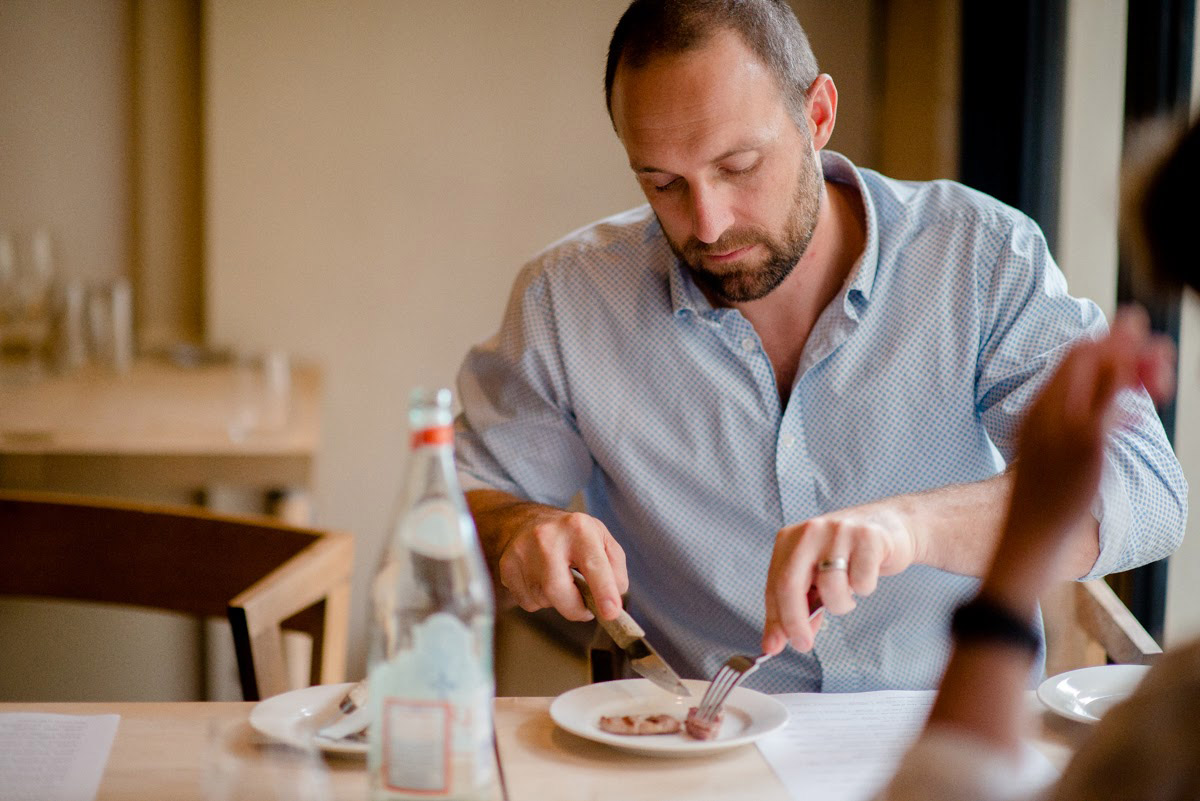Dry-aged lamb to beef up the menu
Dry-aged beef producer and restaurateur Tim Burvill this week conducted what he believes to be the first trial of dry-aged sheep meat in Australia, with promising results for older cuts.


Restaurateur Tim Burvill and MLA corporate chef Sam Burke at A Hereford Beefstouw.
Burvill, who opened the Hutt Street branch of international restaurant chain A Hereford Beefstouw in 2011, already produces dry-aged beef for both the restaurant and South Australian Foodland stores.
He was contacted by Meat and Livestock Australia (MLA) to develop a similar sheep-meat product to the dry-aged beef that would help increase consumer demand for lamb and ultimately boost revenue for sheep producers.
“Dry ageing is a centuries’ old technique of improving the flavour and texture of beef by hanging it on the bone for up to 120 days,” he says of the process he uses to produce 5 tonnes of A Hereford Dry Aged Beef per month.
In collaboration with the MLA, Burvill began experimenting with the dry-ageing process on different lamb, hogget and mutton cuts on in February this year at his temperature-controlled Mt Barker facility.
“Lamb takes between 30 to 40 days of dry ageing before it starts losing yield,” he explains.
“There is less wastage on secondary cuts compared to loin cuts, and the process is showing improvement in flavour and texture of hogget and mutton particularly.”

Different cuts of dry-aged lamb were compared alongside wet-aged examples. Photo: Nat Rogers/InDaily
At the trial, the dry-aged lamb was compared with “wet-aged” lamb (which is vacuum-packed and refrigerated) and trialled by a selection of experienced members of the SA food community.
“We were really impressed with the results; we saw an increase in the good flavours and the tenderness overall, which will translate as a real upside for sheep farmers.
“From here, the next step is to put the dry-aged lamb into our restaurants and then assess the feasibility of a stand-alone product from our customer base.”
Burvill expects the price of a finished dish of dry-aged lamb in his restaurant to be similar to the cost of dry-aged beef dish on the menu (500g “Cote de Boeuf”, $55).
He has no specific sheep breed in mind for the production of a branded product at this stage.






